
QUATERNAIRE
metrics 2024
Uncovering Geological Insights for a Sustainable Future.
Introduction
QUATERNAIRE is a reputable journal managed by the Société Géologique de France, specializing in the realms of Earth-Surface Processes and Geology. This esteemed publication has been a vital platform for scientific discourse since its inception, presenting compelling research and insights from both fields. With a significant impact in the academic community, it currently holds a Q3 quartile ranking in the 2023 Scopus categories, demonstrating its importance in disseminating knowledge related to geological phenomena. Although QUATERNAIRE does not have an open access model, it ensures that critical research is accessible to a wide audience, enhancing collaboration among geoscientists and environmental researchers. Based in France at 77, Rue Claude-Bernard, Paris F-75005, this journal continues to evolve its publication scope, welcoming contributions that delve into the intricacies of Earth's processes from 1990 to 2024. Researchers, professionals, and students alike will find valuable resources and inspiration within its pages, contributing to a deeper understanding of our planet's past and present.
Metrics 2024
 0.34
0.34 1.00
1.00 0.80
0.80 34
34Metrics History
Rank 2024
Scopus
IF (Web Of Science)
JCI (Web Of Science)
Quartile History
Similar Journals
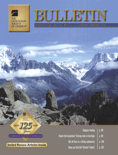
GEOLOGICAL SOCIETY OF AMERICA BULLETIN
Pioneering Insights in Geological Research Since 1890The Geological Society of America Bulletin (GSA Bulletin), with ISSN 0016-7606 and E-ISSN 1943-2674, is a premier scholarly journal published by Geological Society of America, Inc. Based in the United States, this journal has been a cornerstone of geological research since its inception in 1890, making significant contributions to the understanding of Earth sciences over more than a century. Recognized for its rigorous peer-review process, the GSA Bulletin currently holds a prestigious Q1 ranking in Geology, positioning it among the top 14 journals in Earth and Planetary Sciences in terms of Scopus ranking, reflecting the high quality and impact of the research it publishes. Researchers, professionals, and students alike benefit from its comprehensive coverage of geological topics, including sedimentology, volcanology, and paleontology, which supports the advancement of knowledge in the geosciences. While the journal is not open access, it continues to provide a vital platform for innovative research and critical discussions that shape the future of geology.
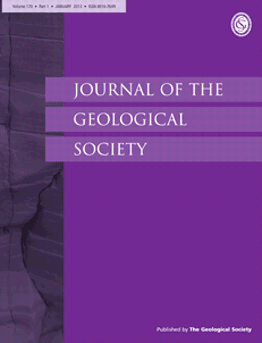
JOURNAL OF THE GEOLOGICAL SOCIETY
Connecting Scholars to the Heart of GeologyJOURNAL OF THE GEOLOGICAL SOCIETY, published by GEOLOGICAL SOC PUBL HOUSE, is a premier academic journal dedicated to advancing the field of geology. With a rich history dating back to 1845 and continuously published until 2024, this journal caters to a diverse audience of researchers, professionals, and students involved in earth sciences. The journal is recognized for its high impact factor, situating it in the top Q1 category in the field of geology, as indicated by its impressive Scopus rank of #49 out of 321, positioning it at the 84th percentile in Earth and Planetary Sciences. This esteemed scholarly platform promotes rigorous peer-reviewed research, ensuring that novel findings contribute to the global geological discourse. Although it operates under a subscription model, the journal's archive offers valuable insights for anyone pursuing excellence in geological research. The JOURNAL OF THE GEOLOGICAL SOCIETY stands as a vital resource for disseminating scientific knowledge and fostering educational growth within the field.

VEGETATION HISTORY AND ARCHAEOBOTANY
Connecting Plants and People Across MillenniaVegetation History and Archaeobotany is an esteemed academic journal published by Springer, dedicated to the exploration of the interactions between vegetation, human activity, and the archaeological record. With its history spanning from 1992 to 2024, the journal has established a significant presence in the academic community, particularly with its strong impact reflected in its Q1 rankings across diverse fields such as Archaeology, Paleontology, and Plant Science. The journal consistently ranks among the top publications, achieving remarkable positions such as 12th in Archeology and 9th in Paleontology according to Scopus, which underscores its influence and quality in the field. Aimed at researchers, professionals, and students alike, Vegetation History and Archaeobotany serves as a crucial resource for those seeking to understand the pivotal role of plant remains in reconstructing past environments and human interactions. Readers can expect to find rigorously reviewed articles that contribute to the ongoing discourse in vegetation studies and archaeological science.

GEOMORPHOLOGY
Pioneering Research in Geomorphological Science.GEOMORPHOLOGY, published by Elsevier, is a leading journal that focuses on the study of landforms, along with the processes that shape them. Established in 1984, the journal has evolved to become an essential resource for researchers in the field of Earth-Surface Processes, currently holding a prestigious Q1 quartile ranking and occupying the 17th position out of 179 journals in Scopus, placing it within the top 10% of publications in this domain. This impact underscores its significance in advancing understanding within geosciences, providing a platform for both foundational and innovative research. GEOMORPHOLOGY publishes a diverse array of articles, from empirical studies to theoretical advancements, ensuring accessibility for a broad audience of students, professionals, and academics alike. With its commitment to high-quality research, this journal serves as a critical reference point for ongoing developments and discoveries in geomorphology.
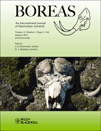
BOREAS
Fostering Groundbreaking Discoveries Since 1972BOREAS is a prestigious academic journal published by WILEY, dedicated to advancing knowledge across the fields of Archaeology, Ecology, Evolution, Behavior, Systematics, and Geology. With a commendable track record since its inception in 1972, BOREAS has consistently contributed to the scholarly landscape, currently holding a distinguished position in Q1 across multiple categories, including a ranking of #8 in Archaeology and a solid percentile rank in Ecology and Geology. This high-impact journal fosters the dissemination of groundbreaking research, further establishing itself as a vital resource for researchers, professionals, and students alike. While access options are limited to subscription-based, the quality and significance of research published in BOREAS make it an essential addition to any academic library, ensuring that studies conducted in these pivotal fields reach a global audience. With a commitment to excellence and innovation, BOREAS continues to drive forward the frontiers of knowledge and understanding in Earth and planetary sciences.

TRIA-Territorio della Ricerca su Insediamenti e Ambiente
Exploring the Nexus of Settlements and EnvironmentTRIA-Territorio della Ricerca su Insediamenti e Ambiente, published by EDIZIONI SCIENTIFICHE ITALIANE SPA, is a distinguished open-access journal dedicated to the interdisciplinary exploration of territorial research pertaining to settlements and the environment. Since its establishment, the journal has been at the forefront of facilitating dialogue and disseminating innovative research that informs sustainable development and urban planning practices. With an ISSN of 1974-6849 and an E-ISSN of 2281-4574, TRIA contributes significantly to the academic community by providing a platform for researchers, professionals, and scholars to share their findings globally. Located in the vibrant city of Naples, Italy, this journal aims to bridge the gap between theoretical frameworks and practical applications in the dynamics of territorial studies. The open-access model, adopted since 2012, ensures that valuable research reaches a broader audience, elevating the conversation around environmental sustainability and settlement patterns. As a key resource in its field, TRIA is poised to foster collaboration and inspire advancements in research methodologies, helping to solve contemporary challenges in urban and environmental studies.
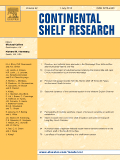
CONTINENTAL SHELF RESEARCH
Shaping the Future of Oceanographic ResearchCONTINENTAL SHELF RESEARCH, published by PERGAMON-ELSEVIER SCIENCE LTD, is an esteemed journal within the fields of Aquatic Science, Geology, and Oceanography, reflecting a compelling intersection of these disciplines. Since its inception in 1982, this journal has served as a premier platform for disseminating cutting-edge research relevant to the continental shelf ecosystem, including its geological features, biological resources, and physical processes. With a Category Quartile ranking of Q1 in Aquatic Science and prominent Q2 standings in Geology and Oceanography, it is recognized for its rigorous peer-review standards and impactful contributions, evidenced by its respective rankings in Scopus. Researchers and professionals are encouraged to engage with the journal's array of high-quality articles that not only enhance scientific understanding but also inform policy and conservation efforts. This dedication to advancing knowledge makes CONTINENTAL SHELF RESEARCH an essential resource for those passionate about marine and coastal studies in the United Kingdom and globally.
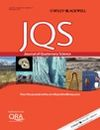
JOURNAL OF QUATERNARY SCIENCE
Unveiling the Secrets of Our Planet's PastThe JOURNAL OF QUATERNARY SCIENCE, published by Wiley, stands as a premier platform for the dissemination of pivotal research in the fields of Arts and Humanities, Earth and Planetary Sciences, and Paleontology. With its ISSN 0267-8179 and E-ISSN 1099-1417, this esteemed journal has achieved an impressive Q1 ranking across multiple categories in 2023, highlighting its significant impact and relevance within the academic community. With a history extending from 1986 to 2024, it offers a treasure trove of knowledge, presenting cutting-edge studies that advance our understanding of Quaternary science. Although the journal does not operate under an Open Access model, it remains highly regarded, as evidenced by its Scopus rankings positioning it in the top percentiles within its categories. Researchers, professionals, and students alike will benefit from the robust insights and innovative research published in this journal, making it an essential resource for anyone engaged in the study of Quaternary environments and their implications on our planet’s history.

BULLETIN OF GEOSCIENCES
Transforming Knowledge into Action for a Sustainable FutureBULLETIN OF GEOSCIENCES, published by the prestigious Czech Geological Survey, stands as a pivotal resource in the fields of Earth and Planetary Sciences and Environmental Science. Since its inception in 2003, the journal has been committed to advancing knowledge through high-quality research, currently holding a commendable Q2 ranking in both disciplines. With its focus on diverse and innovative topics, BULLETIN OF GEOSCIENCES provides an essential platform for researchers, professionals, and students aiming to disseminate and access impactful studies. The journal is indexed in Scopus, ranking #78/195 in General Earth and Planetary Sciences and #110/233 in General Environmental Science, reflecting its significant contribution to academia. Publishing from Prague, Czech Republic, this journal invites contributions that illuminate the interactions between geological processes and environmental phenomena, ensuring an inclusive and accessible approach to crucial global issues.
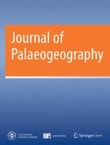
Journal of Palaeogeography-English
Connecting Geographical Insights with Paleontological DiscoveriesThe Journal of Palaeogeography-English, published by Elsevier Science Inc, is a leading peer-reviewed open access journal that has been an essential resource for researchers since its establishment in 2012. With its focus on Earth-Surface Processes, Geography, Planning, Development, and Paleontology, the journal has secured a premier position in the academic community, recently achieving Q1 category rankings in multiple fields. The journal's current impact is reflected in its Scopus rankings, placing it in the top percentile of its categories, such as rank #12 in Paleontology and #39 in Earth-Surface Processes. With open access options, it facilitates wide dissemination and engagement with high-quality research, making significant contributions to our understanding of geographical and paleontological phenomena. As the journal converges towards 2024, it aims to continue fostering innovative research and interdisciplinary dialogue that will stimulate advancements in our knowledge of Earth’s past and present environments, appealing to a diverse audience of researchers, professionals, and students alike.